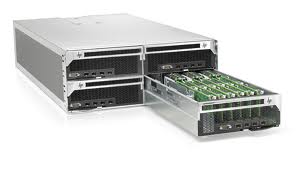Perhaps it’s been a few years since your server was installed. (Server upgrades are recommended every five to six years by the way.) Maybe your business has gotten too big for your current server’s britches. Or a new server technology or functionality is on the market that you covet. If you are looking for new server, or would like to sell your old one, you could look into a company similar to Exit Technologies, who provides a way for your business to sell your unwanted servers – go to exittechnologies.com to learn more.
Regardless of your reasoning behind it, here are three things to consider:
1. Version Planning
In a perfect world, all past, present, and future programs would work with any new server upgrade. But the reality is that they don’t. Before upgrading a server, triple-check to ensure that the programs critical to running your business are compatible with the server upgrade you’re installing. For example, critical programs like accounting, human resources, point of sale, etc. There’s nothing more frustrating than installing a new server expecting business-changing efficiency and learning your programs just won’t run on the new server. New software programs will need to be thoroughly researched first to make sure they are compatible, this can be done by checking out various platforms like harbortouch to see how they can provide the fundamental outcomes the business needs.
2. Capacity Planning
Planning a server upgrade for capacity requires putting on the old architect’s hat. The space designed must meet capacity’s planning. The concept is much like building an office. You can’t stuff 300 employees into a building designed for 150 people. Capacity planning for a server upgrade involves determining how much data you currently have, measuring the average growth rate for data and estimating your data requirements for the next five to six years.
The storage available with your new server equals capacity-not only in terms of holding documents, but also your capacity to grow. There are several questions to think about: What are your plans for growth in product or service? Will you be hiring additional staff? How many? Will you be offering more electronic customer-facing features? These answers and more will determine how much space to include in your server upgrade. Without serious capacity planning, you’ll waste time and money because you’ll outgrow your new server more quickly than you might expect.
3. Use Planning
Not all server systems are created equally. A system that only needs to support file and print services is cheaper than one that needs support a high volume database. So when you’re planning a server upgrade, choose a system that matches, or even exceeds, your needs-now and down the road.
What will you use the server for? A server upgrade for one business is different from another. Some businesses may need a server capable of handling a million requests per hour. Others may be upgrading servers to store documents (known as file and print services), which keeps the server demand pretty low. File and print service server upgrades aren’t as expensive as high performance server upgrades, but keep in mind how many people and from where they’ll be pulling those files. More people spread around the world require a better performing server as a business IT support tool.
In the end, it’s not necessarily the server upgrade that is the trickiest part of technology. It’s the planning or lack thereof that creates problems and disappointments. Planning, planning and more planning-that’s what it takes to maximize your server investment to boost productivity and spur growth.




